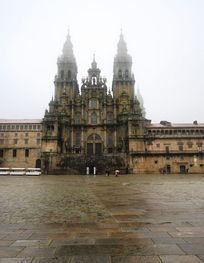
Santiago de Compostela: The Heart of Pilgrimage and Spanish Charm
Discover Santiago de Compostela, a UNESCO World Heritage Site, known for its breathtaking cathedral, rich cultural history, and as the final stop of the Camino de Santiago.
Santiago de Compostela, the capital of Galicia in northwestern Spain, is a city steeped in history and spiritual significance. This UNESCO World Heritage Site is the final destination of the Camino de Santiago, a famed pilgrimage route that has drawn travelers for centuries. The city's centerpiece is the awe-inspiring Santiago de Compostela Cathedral, where the remains of Saint James the Apostle are believed to rest. This magnificent structure, with its Baroque facade and Romanesque interior, is a marvel of medieval architecture and a focal point for visitors. Beyond its religious heritage, Santiago de Compostela offers a vibrant cultural scene and a picturesque old town. Wander through the narrow, cobblestone streets lined with charming shops, cozy cafes, and historic buildings. The city's medieval walls and ancient monasteries provide a glimpse into its rich past. Plaza del Obradoiro, the main square, is a hive of activity where pilgrims, tourists, and locals converge to soak in the city's unique atmosphere. Food lovers will delight in the culinary offerings of Santiago de Compostela. The local cuisine, featuring fresh seafood and traditional Galician dishes, is a treat for the taste buds. Don't miss trying pulpo a la gallega (Galician-style octopus) or tarta de Santiago (a delicious almond cake). The city also hosts numerous festivals throughout the year, celebrating everything from music and theater to traditional crafts and foods. Santiago de Compostela is not just a destination; it's an experience that touches the soul and ignites the imagination.
Local tips in Santiago de Compostela
- Wear comfortable walking shoes as the city is best explored on foot, especially the old town with its cobblestone streets.
- Visit the cathedral early in the morning to avoid the crowds and attend the Pilgrim's Mass at noon.
- Take time to explore the local markets, like Mercado de Abastos, for fresh produce and local delicacies.
- Try to learn a few basic phrases in Spanish or Galician; locals appreciate the effort and it can enhance your experience.
- Check the calendar for local festivals such as the Feast of St. James in July for a truly immersive cultural experience.
Neighbourhoods in Santiago de Compostela
Santiago de Compostela: The Heart of Pilgrimage and Spanish Charm
Santiago de Compostela, the capital of Galicia in northwestern Spain, is a city steeped in history and spiritual significance. This UNESCO World Heritage Site is the final destination of the Camino de Santiago, a famed pilgrimage route that has drawn travelers for centuries. The city's centerpiece is the awe-inspiring Santiago de Compostela Cathedral, where the remains of Saint James the Apostle are believed to rest. This magnificent structure, with its Baroque facade and Romanesque interior, is a marvel of medieval architecture and a focal point for visitors. Beyond its religious heritage, Santiago de Compostela offers a vibrant cultural scene and a picturesque old town. Wander through the narrow, cobblestone streets lined with charming shops, cozy cafes, and historic buildings. The city's medieval walls and ancient monasteries provide a glimpse into its rich past. Plaza del Obradoiro, the main square, is a hive of activity where pilgrims, tourists, and locals converge to soak in the city's unique atmosphere. Food lovers will delight in the culinary offerings of Santiago de Compostela. The local cuisine, featuring fresh seafood and traditional Galician dishes, is a treat for the taste buds. Don't miss trying pulpo a la gallega (Galician-style octopus) or tarta de Santiago (a delicious almond cake). The city also hosts numerous festivals throughout the year, celebrating everything from music and theater to traditional crafts and foods. Santiago de Compostela is not just a destination; it's an experience that touches the soul and ignites the imagination.
When is the best time to go to Santiago de Compostela?
Iconic landmarks you can’t miss
Cathedral of Santiago de Compostela
Discover the architectural grandeur and spiritual significance of the Cathedral of Santiago de Compostela, a UNESCO World Heritage site in Spain.

Parque da Alameda (Santiago de Compostela)
Explore the lush landscapes and breathtaking views at Parque da Alameda, a must-visit park in Santiago de Compostela for all nature lovers.
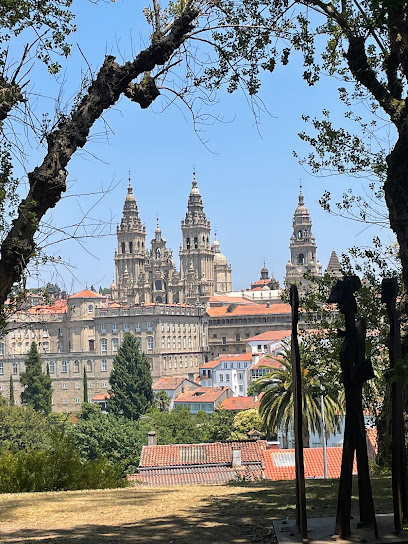
Praza de Galicia
Explore the beauty of Praza de Galicia, a historical park in Santiago de Compostela, where nature meets culture in a vibrant atmosphere.
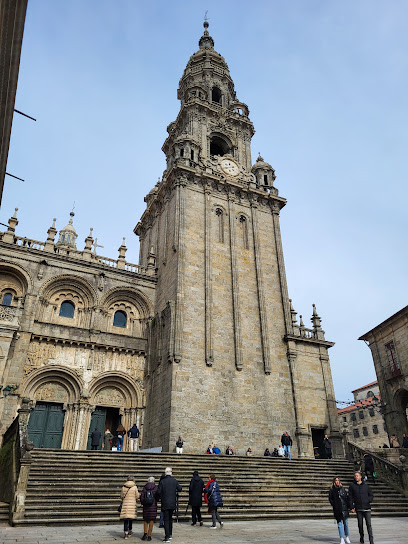
Cidade da Cultura de Galicia
Explore the Cidade da Cultura de Galicia, a vibrant cultural center in Santiago de Compostela, celebrating the artistic heritage of Galicia through stunning architecture and exhibitions.
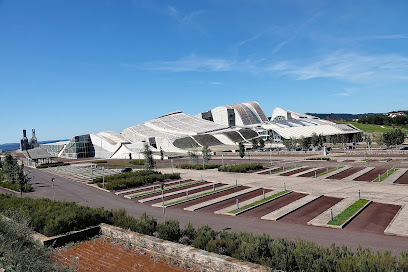
Praza da Quintana de Vivos
Experience the historical charm and vibrant ambiance of Praza da Quintana de Vivos, a must-see landmark in Santiago de Compostela.
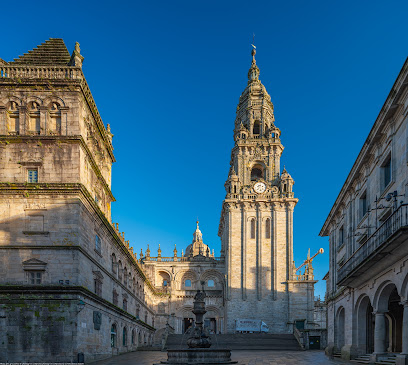
Parque de San Domingos de Bonaval
Discover the serene beauty and cultural richness of Parque de San Domingos de Bonaval in Santiago de Compostela, a must-visit park for every traveler.
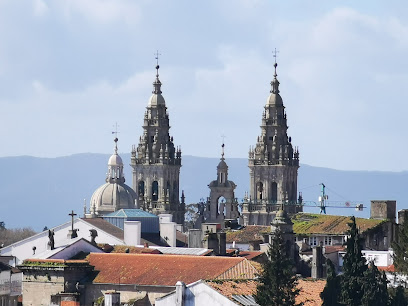
Museo del Pueblo Gallego
Explore the vibrant heritage of Galicia at Museo del Pueblo Gallego, a treasure trove of culture and history in Santiago de Compostela.
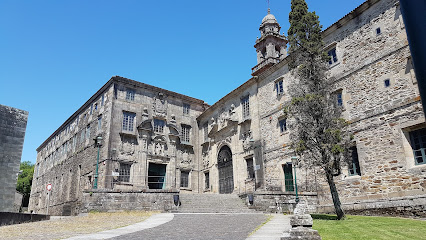
As Duas Marias
Discover the enchanting As Duas Marias sculpture in Santiago de Compostela's Parque de la Alameda, a cultural gem blending art and nature in perfect harmony.
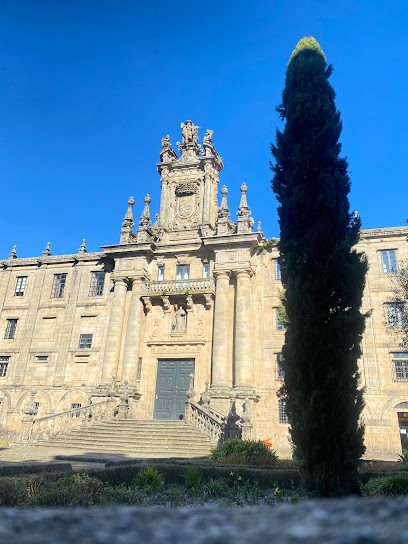
Praza de Cervantes
Discover the historical charm and vibrant culture of Praza de Cervantes, a must-visit landmark in Santiago de Compostela.
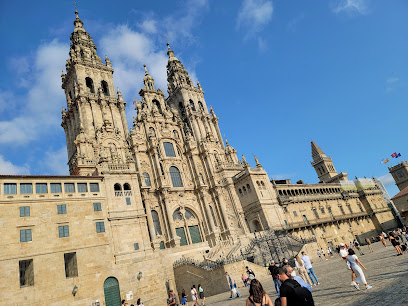
Porch of the Glory
Explore the stunning Porch of the Glory at Santiago de Compostela Cathedral, a masterpiece of Romanesque art and a pilgrimage site of great historical significance.
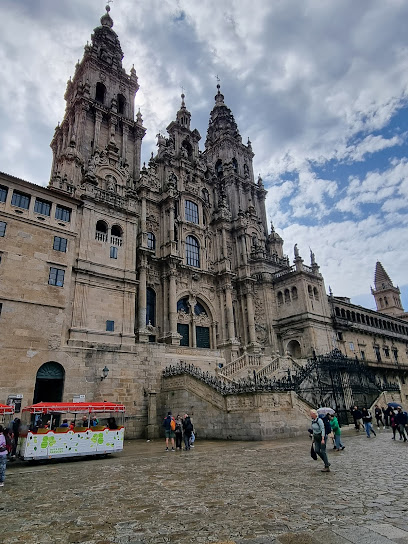
Miradoiro da Catedral
Discover the breathtaking views of the Santiago de Compostela Cathedral from the Miradoiro da Catedral, a must-visit scenic spot steeped in history.

Parque de Vista Alegre (Finca Simeón)
Experience the serene beauty of Parque de Vista Alegre, a tranquil park in Santiago de Compostela, perfect for relaxation and scenic walks.
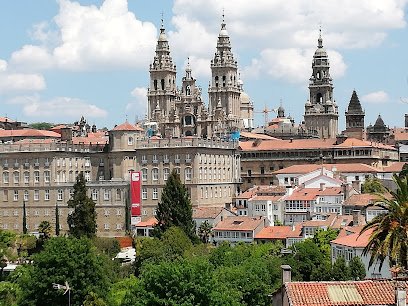
Parque de Belvís
Experience the tranquil beauty of Parque de Belvís, a serene park in Santiago de Compostela perfect for relaxation and cultural exploration.

Parque de Galeras
Explore the serene beauty of Parque de Galeras, a peaceful urban park in Santiago de Compostela, ideal for relaxation and family fun.
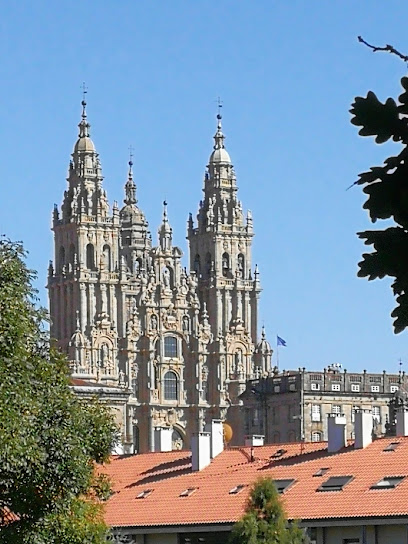
Palace of Fonseca
Explore the Palace of Fonseca, a stunning historical landmark in Santiago de Compostela showcasing Renaissance architecture and rich cultural heritage.
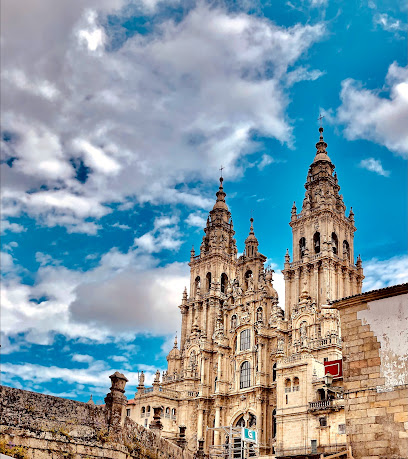
Unmissable attractions to see
Parque da Alameda
Explore the lush greenery and stunning views of Parque da Alameda, a tranquil oasis in Santiago de Compostela that showcases the beauty of Galicia's nature.
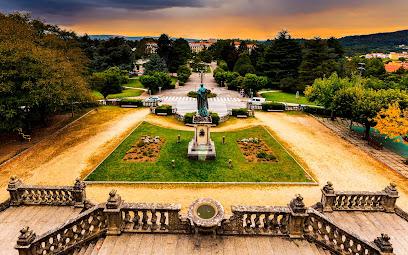
Ézaro waterfall
Explore the stunning Ézaro Waterfall in A Coruña, a natural wonder offering breathtaking views and outdoor adventures in the heart of Galicia.
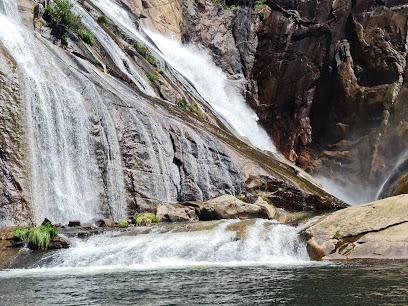
Cidade da Cultura de Galicia
Discover the stunning Cidade da Cultura de Galicia, a hub of modern architecture and cultural events in the heart of Santiago de Compostela.
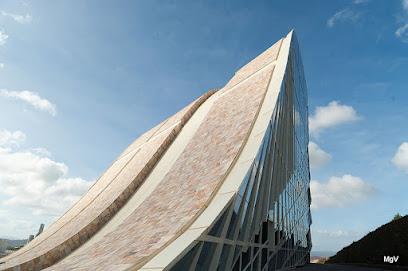
Hórreo de Carnota
Discover the iconic Hórreo de Carnota in A Coruña, a stunning example of Galician architecture amidst breathtaking landscapes.
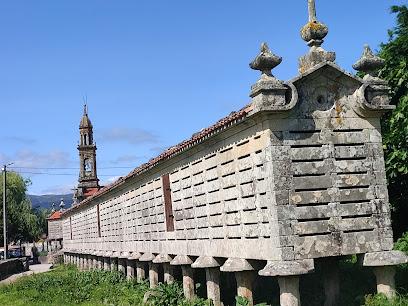
Iglesia de Santa María la Mayor
Explore the beauty and history of the Basilica of Santa María la Mayor, a stunning architectural gem in Pontevedra, Spain.
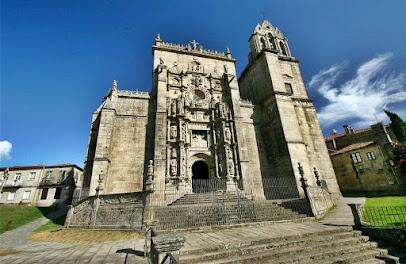
Parque de San Domingos de Bonaval
Explore the tranquil beauty and historical charm of Parque de San Domingos de Bonaval in Santiago de Compostela.
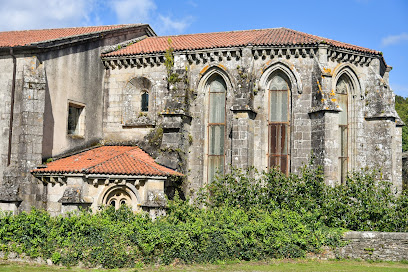
Museo del Pueblo Gallego
Explore the rich cultural heritage of Galicia at Museo del Pueblo Gallego, an ethno-historical journey through the region's unique traditions and artistry.

Illa da Toxa
Experience the serene beauty of Illa da Toxa, an idyllic island in O Grove known for its stunning beaches, luxurious spas, and rich Galician culture.
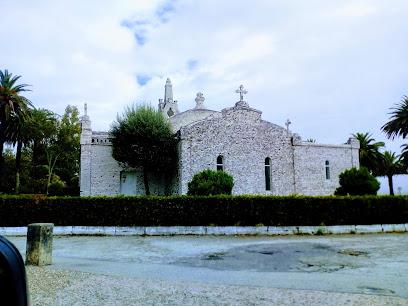
Praia de Carnota
Discover the breathtaking Praia de Carnota, a stunning beach in A Coruña, Spain, perfect for relaxation, adventure, and cultural exploration.
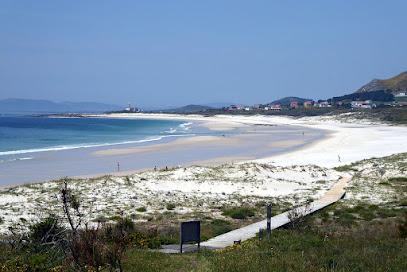
Ponte do Burgo
Explore the stunning Ponte do Burgo in Poio, a bridge that combines beautiful architecture with breathtaking views of the Lérez River.
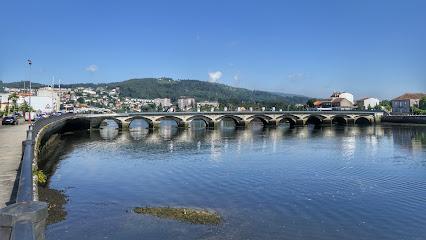
Colegiata de Santa María de Sar
Discover the architectural beauty and serene atmosphere of Colegiata de Santa María de Sar in Santiago de Compostela, a historical gem of Romanesque design.
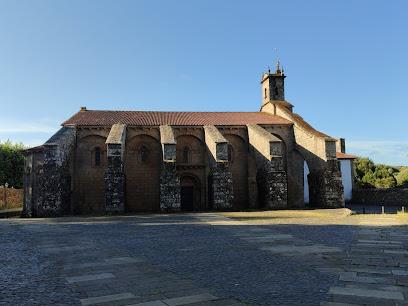
Contemporary Art Center of Galicia
Explore the Contemporary Art Center of Galicia in Santiago de Compostela, where modern creativity meets rich cultural heritage through dynamic exhibitions.

Bar A Ría
Experience the authentic flavors of A Coruña at Bar A Ría, where grilled delicacies meet stunning views and a warm, inviting atmosphere.

Porch of the Glory
Explore the historical Porch of the Glory at Santiago de Compostela Cathedral, a stunning masterpiece of Romanesque art and a key pilgrimage destination.

TOUR GALICIA - Excursiones y Tours por Galicia
Explore the stunning landscapes and rich culture of Galicia with TOUR GALICIA, the premier sightseeing agency in Santiago de Compostela.
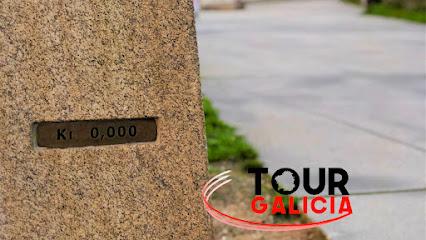
Essential places to dine
Casa Manolo
Discover authentic Galician flavors at Casa Manolo in Santiago de Compostela, where tradition meets taste in every dish.
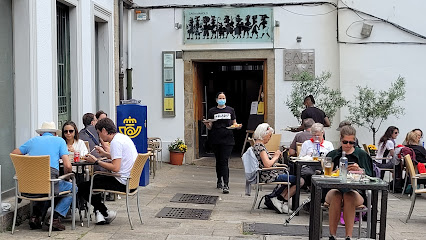
A Taberna do Bispo
Indulge in exquisite tapas at A Taberna do Bispo – where every bite tells a story of Galician tradition.
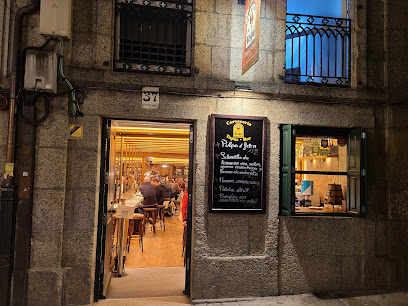
Mesón 42
Indulge in the flavors of Galicia at Mesón 42 - a traditional restaurant offering authentic dishes in a warm and welcoming atmosphere.
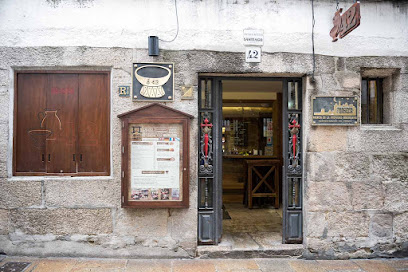
Taberna O Gato Negro
Discover authentic Galician cuisine at Taberna O Gato Negro in Santiago de Compostela - where flavors meet tradition.
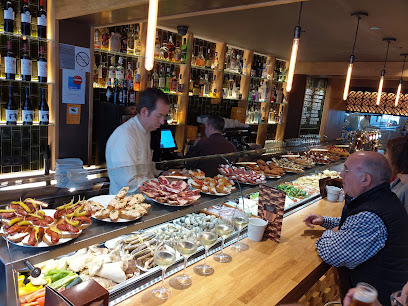
A Noiesa Casa de Comidas
Experience authentic Galician flavors at A Noiesa Casa de Comidas in Santiago de Compostela - where tradition meets taste.
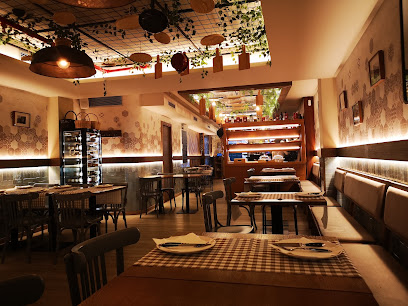
El Papatorio
Experience authentic Galician cuisine at El Papatorio in Santiago de Compostela—where tradition meets flavor in every dish.
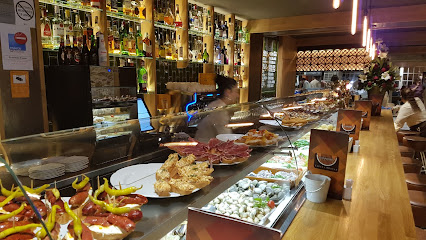
Casa de Xantar O Dezaseis (Santiago de Compostela)
Discover authentic Galician cuisine at Casa de Xantar O Dezaseis in Santiago de Compostela – where tradition meets flavor.

Tapas Petiscos Do Cardeal
Experience authentic Spanish cuisine at Tapas Petiscos Do Cardeal, where every dish tells a story of Galician flavors in a vibrant setting.
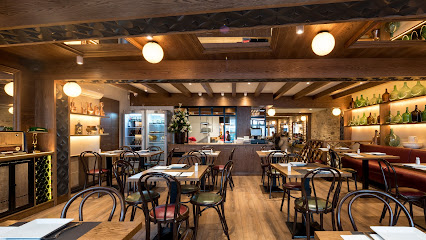
Restaurante María Castaña
Discover authentic Galician flavors at Restaurante María Castaña in Santiago de Compostela - where tradition meets taste.

Restaurante O Piorno
Experience the rich flavors of Galicia at Restaurante O Piorno in Santiago de Compostela - a culinary gem celebrating authentic Galician cuisine.

RESTAURANTE SAN CLEMENTE
Discover exquisite seafood at Restaurante San Clemente in Santiago de Compostela, where tradition meets culinary excellence.
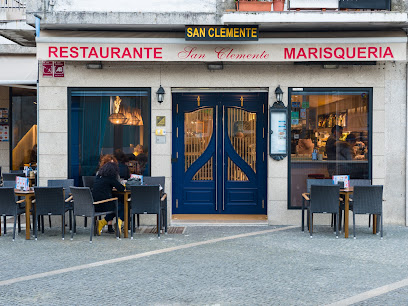
El Mesón Do Pulpo
Discover authentic Galician flavors at El Mesón Do Pulpo in Santiago de Compostela, famous for its exquisite octopus dishes and welcoming atmosphere.
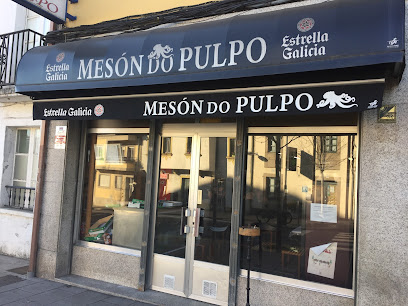
Casa Marcelo
Experience exquisite fusion cuisine at Casa Marcelo in Santiago de Compostela, where Galician tradition meets modern culinary artistry.
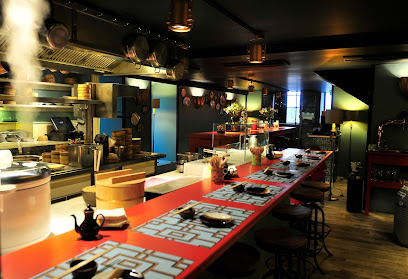
O Sendeiro
Experience authentic Galician cuisine at O Sendeiro in Santiago de Compostela - where tradition meets flavor.
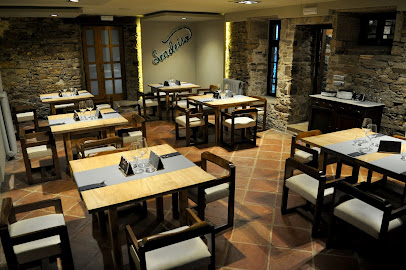
Restaurante San Jaime
Experience authentic Galician cuisine at Restaurante San Jaime in Santiago de Compostela - a culinary gem that delights every palate.
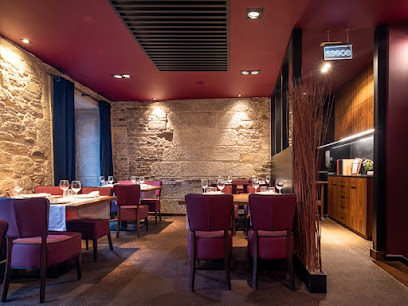
Markets, malls and hidden boutiques
Flying Tiger Copenhagen (Santiago de Compostela)
Explore the whimsical world of Flying Tiger Copenhagen in Santiago de Compostela, where unique gifts and playful goods await every visitor.
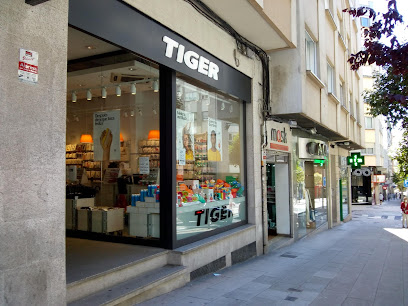
Nikis Galicia Style - Santiago de Compostela
Explore Nikis Galicia Style for authentic Galician gifts and souvenirs that capture the spirit of Santiago de Compostela.
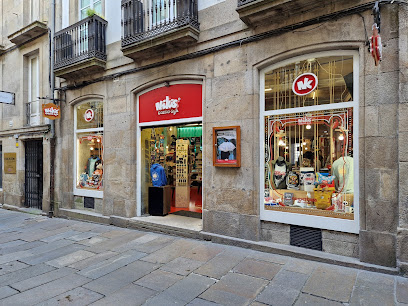
Natura
Explore Natura, a unique gift shop in Santiago de Compostela, offering locally inspired clothing and home goods that make perfect souvenirs.
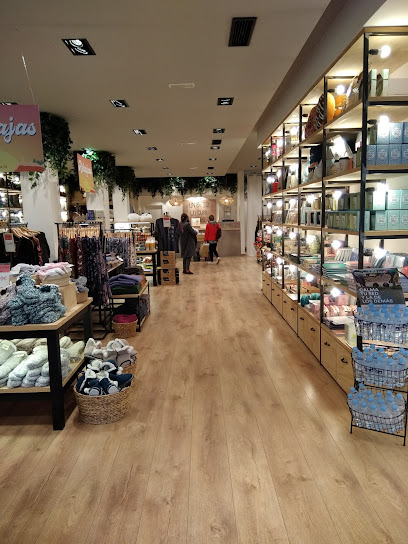
Flamingos Vintage Kilo Santiago de Compostela
Explore unique vintage fashion at Flamingos Vintage Kilo, a treasure trove in the heart of Santiago de Compostela.
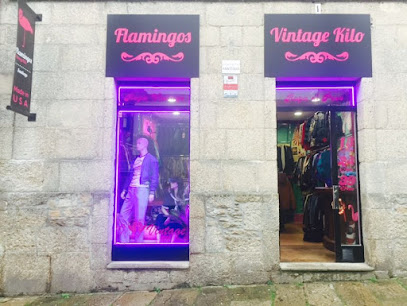
A Reixa Tenda / Matrioska
Explore A Reixa Tenda / Matrioska in Santiago de Compostela - a unique blend of clothing, books, and music that captures local culture.
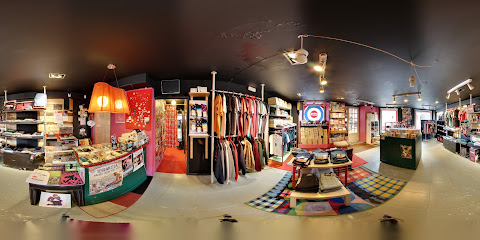
La Tienda de Julia - Santiago
Explore La Tienda de Julia, a charming clothing store in Santiago de Compostela offering unique fashion that reflects local artistry and culture.
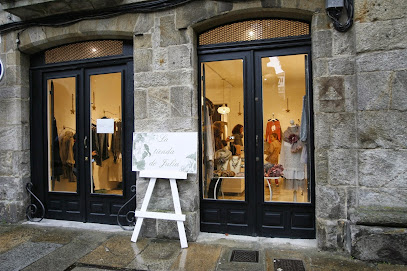
Ela Diz
Discover unique souvenirs and stylish accessories at Ela Diz, a charming gift shop in Santiago de Compostela, reflecting the local culture and artistry.

TRISQUEL ARTESANÍA
Explore Trisquel Artesanía for unique handmade crafts and immerse yourself in the rich cultural heritage of Santiago de Compostela.
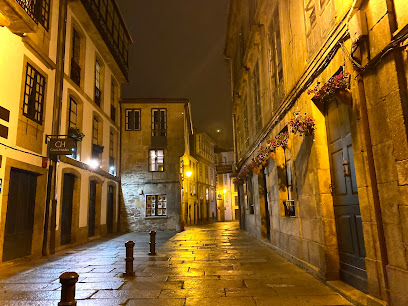
Cousalinda
Discover Cousalinda: your go-to destination for unique clothing, jewelry, and souvenirs in Santiago de Compostela.
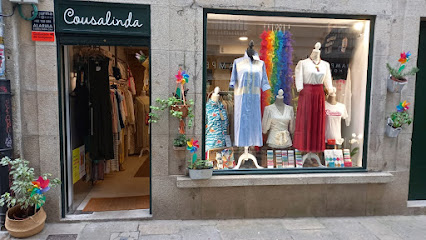
Pilgrim Bag
Explore the artistry of unique handbags at Pilgrim Bag, a charming shop in the heart of Santiago de Compostela offering stylish designs with a personal touch.
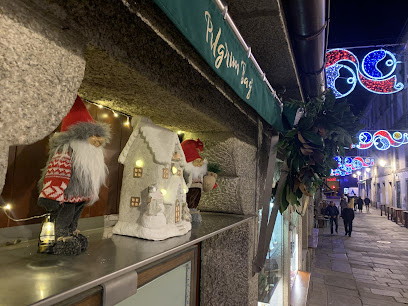
A Rúa Recordos
Explore A Rúa Recordos, a unique novelty store in Santiago de Compostela, offering eclectic gifts and local crafts for every traveler.
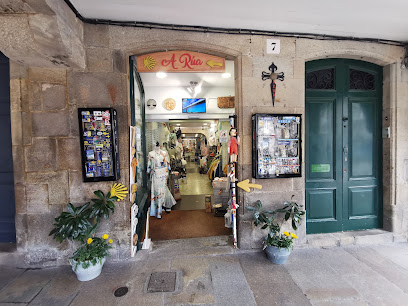
Recuerdos Obradoiro
Explore the treasures of Santiago at Recuerdos Obradoiro, your go-to gift shop for authentic Galician souvenirs and crafts.

The Cott Santiago
Discover exquisite dresses and stylish outfits at The Cott Santiago, a must-visit boutique in the heart of Santiago de Compostela's vibrant fashion scene.
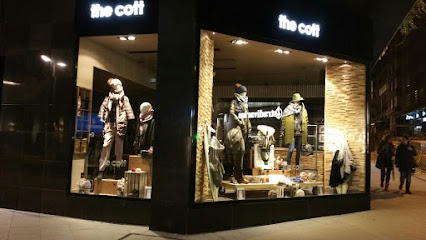
Souvenirs As 5 Ruas
Discover the essence of Santiago de Compostela at Souvenirs As 5 Ruas, where unique local crafts and artisan treasures await every traveler.

Espadela
Discover unique books, fashion, and accessories at Espadela, a vibrant store in the heart of Santiago de Compostela, perfect for authentic souvenirs.

Essential bars & hidden hideouts
Pub Momo
Experience the vibrant nightlife of Santiago de Compostela at Pub Momo, where great drinks and lively atmosphere await.
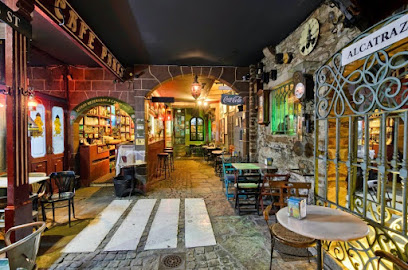
Pub Garoa (Santiago de Compostela)
Dive into Santiago de Compostela's nightlife at Pub Garoa, where exquisite cocktails and local brews meet a vibrant atmosphere.
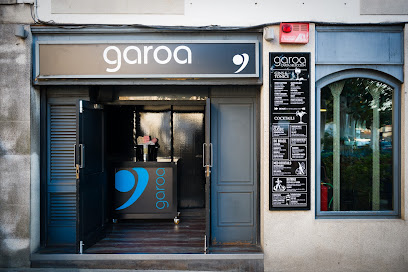
Pub Modus Vivendi (Santiago de Compostela)
Discover the lively ambiance and local flavors at Pub Modus Vivendi, a must-visit pub in Santiago de Compostela for an authentic experience.
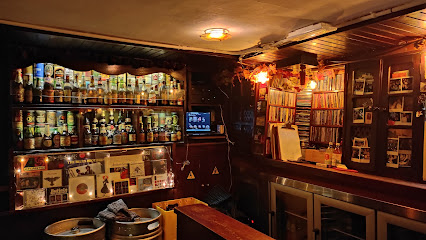
Pub Atlántico (Santiago de Compostela)
Discover Pub Atlántico, a lively cocktail bar and rock music club in Santiago de Compostela, perfect for experiencing local nightlife.
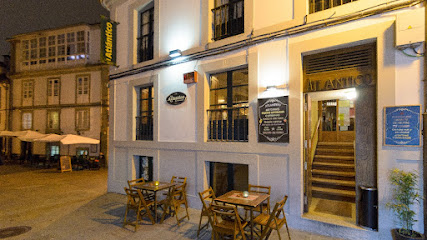
Tarasca
Discover Tarasca, a vibrant pub in Santiago de Compostela, offering a taste of local nightlife with exceptional brews and a welcoming atmosphere.

A Reixa Bar (Santiago de Compostela)
Experience the vibrant nightlife at A Reixa Bar in Santiago de Compostela, a must-visit pub offering local drinks, live music, and a lively atmosphere.

Bar Camalea
Discover the heart of Santiago de Compostela at Bar Camalea, where friendly vibes and refreshing drinks await in a cozy atmosphere.
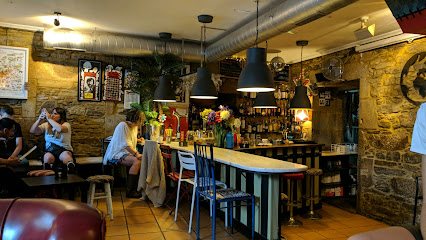
Bloom
Discover Bloom, an affordable pub in Santiago de Compostela, where vibrant nightlife meets a warm atmosphere for unforgettable evenings.

Avante Compostela Galiza Pub (Santiago de Compostela)
Discover the lively atmosphere of Avante Compostela Galiza Pub, a vibrant destination in Santiago de Compostela, perfect for drinks and socializing.
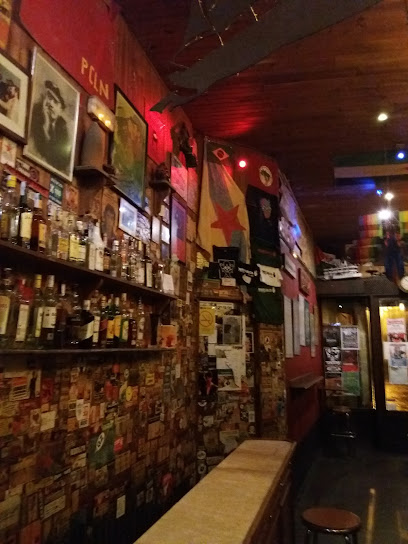
Pub Lucille (Santiago de Compostela)
Experience the lively ambiance of Pub Lucille in Santiago de Compostela, where locals and tourists gather for authentic drinks and unforgettable nights.
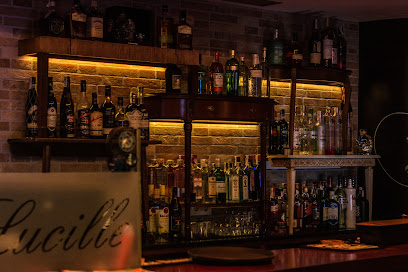
A Medusa Pub (Santiago de Compostela)
Experience the vibrant nightlife of Santiago de Compostela at A Medusa Pub, where local culture meets a lively atmosphere and affordable drinks.
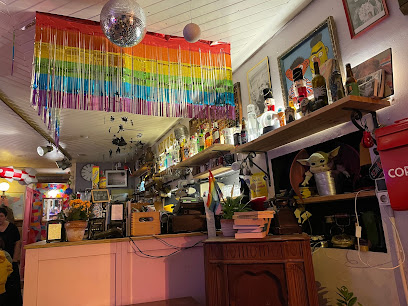
Pub Século IX
Discover the lively nightlife of Santiago de Compostela at Pub Século IX, a vibrant pub offering local drinks and a welcoming atmosphere for all.
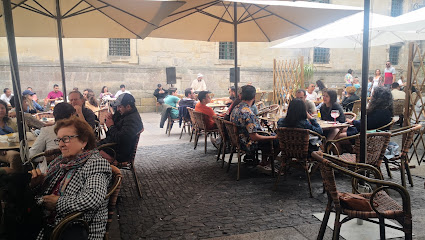
Embora Bar Musical
Discover the lively energy of Embora Bar Musical in Santiago de Compostela, where music, drinks, and culture come together for an unforgettable night.
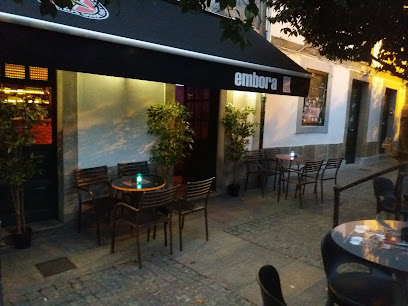
O Boneco Bar (Santiago de Compostela)
Discover the lively ambiance of O Boneco Bar in Santiago de Compostela, where great drinks and live piano music create unforgettable nights.
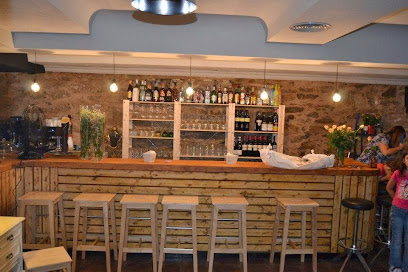
Cafe Bar Arume
Discover the vibrant atmosphere of Cafe Bar Arume in Santiago de Compostela, where local charm meets a delightful drink selection for an unforgettable experience.
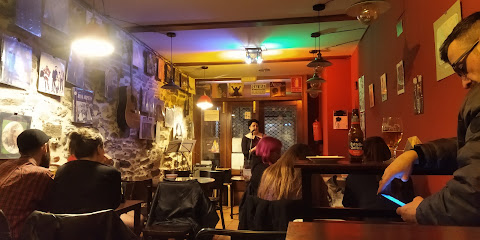
Local Phrases
-
- HelloHola
[OH-lah] - GoodbyeAdiós
[ah-DYOHSS] - YesSí
[SEE] - NoNo
[NOH] - Please/You're welcomePor favor/De nada
[pohr fah-BOHR/deh NAH-dah] - Thank youGracias
[GRAH-thyahss] - Excuse me/SorryPerdón/Lo siento
[pehr-DOHN/loh SYEHN-toh] - How are you?¿Cómo estás?
[KOH-moh ehs-TAHS] - Fine. And you?Bien. ¿Y tú?
[BYEHN. ee TOO] - Do you speak English?¿Hablas inglés?
[AHB-lahss een-GLEHS] - I don't understandNo entiendo
[NOH ehn-TYEHN-doh]
- HelloHola
-
- I'd like to see the menu, pleaseMe gustaría ver la carta, por favor
[meh goos-TAH-ree-ah behr lah KAHR-tah, pohr fah-BOHR] - I don't eat meatNo como carne
[NOH KOH-moh KAHR-neh] - Cheers!Salud!
[sah-LOOD] - I would like to pay, pleaseMe gustaría pagar, por favor
[meh goos-TAH-ree-ah pah-GAHR, pohr fah-BOHR]
- I'd like to see the menu, pleaseMe gustaría ver la carta, por favor
-
- Help!¡Ayuda!
[ah-YOO-dah] - Go away!¡Vete!
[VEH-teh] - Call the Police!¡Llama a la Policía!
[YAH-mah ah lah poh-lee-SEE-ah] - Call a doctor!¡Llama a un médico!
[YAH-mah ah oon MEH-dee-koh] - I'm lostEstoy perdido/a
[eh-STOY pehr-DEE-doh/dah] - I'm illEstoy enfermo/a
[eh-STOY ehn-FEHR-moh/dah]
- Help!¡Ayuda!
-
- I'd like to buy...Me gustaría comprar...
[meh goos-TAH-ree-ah kohm-PRAR] - I'm just lookingSolo estoy mirando
[SOH-loh ehs-TOY meer-AHN-doh] - How much is it?¿Cuánto cuesta?
[KWAHN-toh KWEHS-tah] - That's too expensiveEsto es demasiado caro
[EH-stoh ehs deh-mah-SYA-doh KAH-roh] - Can you lower the price?¿Puede bajar el precio?
[PWEH-deh BAH-hahr ehl PREE-syoh]
- I'd like to buy...Me gustaría comprar...
-
- What time is it?¿Qué hora es?
[keh OR-ah ehs] - It's one o'clockEs la una en punto
[ehss lah OO-nah ehn POON-toh] - Half past (10)Las diez y media
[lahss dyehss ee MEH-dee-ah] - MorningMañana
[mah-NYAH-nah] - AfternoonTarde
[TAHR-deh] - EveningNoche
[NOH-cheh] - YesterdayAyer
[ah-YEHR] - TodayHoy
[oy] - TomorrowMañana
[mah-NYAH-nah] - 1Uno
[OO-noh] - 2Dos
[dohss] - 3Tres
[trehss] - 4Cuatro
[KWAH-troh] - 5Cinco
[SEEN-koh] - 6Seis
[says] - 7Siete
[SYEH-teh] - 8Ocho
[OH-choh] - 9Nueve
[NWEH-veh] - 10Diez
[dyehss]
- What time is it?¿Qué hora es?
-
- Where's a/the...?¿Dónde está...?
[DOHN-deh ehs-TAH] - What's the address?¿Cuál es la dirección?
[KWAHL ehs lah dee-rehk-SYON] - Can you show me (on the map)?¿Puedes mostrarme (en el mapa)?
[PWEH-dehs mohs-TRAHR-meh (ehn ehl MAH-pah)] - When's the next (bus)?¿Cuándo es el próximo (autobús)?
[KWAHN-doh ehs ehl PROH-ksee-moh (ow-toh-BOOS)] - A ticket (to ....)Un billete (a ...)
[oon bee-YEH-teh (ah ...)]
- Where's a/the...?¿Dónde está...?
History of Santiago de Compostela
-
In the early 9th century, the tomb of St. James the Greater, one of Jesus Christ's apostles, was discovered by a hermit named Pelayo. According to legend, Pelayo was guided to the site by a star, leading to the name 'Compostela,' derived from 'Campus Stellae,' or 'Field of the Star.' This discovery transformed the small settlement into a major pilgrimage destination.
-
The foundation of the Santiago de Compostela Cathedral began in 1075 under the orders of Bishop Diego Peláez. The construction spanned several centuries, incorporating Romanesque, Gothic, and Baroque architectural styles. The cathedral became the final stop of the Camino de Santiago, a pilgrimage route traversed by thousands of pilgrims each year.
-
During the Middle Ages, Santiago de Compostela became one of the three most important Christian pilgrimage sites, alongside Jerusalem and Rome. Pilgrims from all over Europe traveled the Camino de Santiago to reach the tomb of St. James, fostering a rich cultural and economic exchange along the route.
-
According to legend, the Battle of Clavijo took place in 844 between the Christian forces of King Ramiro I of Asturias and the Muslim forces of Emir Abd ar-Rahman II. St. James is said to have miraculously appeared on a white horse to aid the Christian army, earning him the title 'Matamoros' or 'Moor-slayer.' This battle reinforced Santiago de Compostela's significance as a symbol of Christian resistance.
-
In 997, the city faced a devastating attack by the Muslim general Al-Mansur. Although the city was sacked and the original church destroyed, the relics of St. James were preserved. The city was later rebuilt, and the cathedral expanded, continuing its role as a major pilgrimage site.
-
In the late 15th century, the Catholic Monarchs, Ferdinand and Isabella, made a significant pilgrimage to Santiago de Compostela. Their visit underscored the city's importance in the unification and Christianization of Spain, further elevating its status within the Spanish kingdoms.
-
The 17th and 18th centuries saw a significant Baroque transformation of the Santiago de Compostela Cathedral. The Obradoiro façade, designed by Fernando de Casas Novoa, became an iconic example of Baroque architecture, enhancing the cathedral's grandeur and attracting even more pilgrims and visitors.
-
In 1985, Santiago de Compostela was declared a UNESCO World Heritage Site. This recognition acknowledged its historical, cultural, and architectural significance. The city's preservation and promotion have continued to attract millions of visitors and pilgrims from around the world.
-
Today, Santiago de Compostela remains a vibrant pilgrimage destination. The Camino de Santiago has experienced a resurgence, with modern pilgrims walking or cycling routes from various starting points in Europe. The city's rich history, stunning architecture, and spiritual significance continue to draw visitors, making it a unique and enduring symbol of faith and cultural heritage.
Santiago de Compostela Essentials
-
Santiago de Compostela is accessible via multiple modes of transportation. The nearest airport is Santiago de Compostela Airport (SCQ), located about 10 kilometers from the city center. The airport serves both domestic and international flights. From the airport, you can take a taxi, airport shuttle, or public bus to reach the city center. Alternatively, Santiago de Compostela is well-connected by train, with regular services from major Spanish cities like Madrid, Barcelona, and Bilbao. For those traveling by car, the city is accessible via the AP-9 motorway.
-
Once in Santiago de Compostela, you can explore the city on foot, as many of the main attractions are within walking distance. Public buses operated by TUSSA provide convenient transport throughout the city and surrounding areas. Taxis are also readily available and can be hailed on the street or booked via phone. For those looking to explore the countryside, renting a car is a viable option. Bicycle rentals are also popular for those wishing to explore the city and its scenic surroundings at a leisurely pace.
-
The official currency in Spain is the Euro (€). Credit and debit cards are widely accepted in hotels, restaurants, and shops. ATMs are plentiful in Santiago de Compostela, allowing you to withdraw cash as needed. It's advisable to carry some cash for smaller purchases, especially in local markets and smaller establishments that may not accept cards.
-
Santiago de Compostela is considered a safe city for tourists. However, like any popular tourist destination, it is wise to remain vigilant. Pickpocketing and petty theft can occur, particularly in crowded areas like the Old Town and near the Cathedral. Avoid walking alone late at night in poorly lit areas. Always keep your belongings secure and be aware of your surroundings.
-
In case of an emergency, dial 112 for immediate assistance, which is the general emergency number in Spain. The local police station and medical facilities are well-equipped to handle emergencies. Hospitals and clinics provide good medical care, and English-speaking staff are often available. It is recommended to have travel insurance that covers medical emergencies. Pharmacies are available throughout the city for minor health issues and over-the-counter medications.
-
Fashion: Do dress conservatively, especially when visiting religious sites. Avoid wearing revealing clothing. Religion: Do respect local customs and traditions. Always be quiet and respectful inside churches and during religious ceremonies. Public Transport: Do be courteous and give up your seat to elderly passengers. Don’t eat or drink on public transport. Greetings: Do greet people with a handshake or a light kiss on each cheek, which is common in Spain. Eating & Drinking: Do try local delicacies and be open to new flavors. Don’t rush through meals; enjoy the leisurely pace of dining that is customary.
-
To experience Santiago de Compostela like a local, consider strolling through the Mercado de Abastos, the city's main market, where you can buy fresh produce and local specialties. Engage with locals, who are often friendly and willing to share insights about the city. Don’t miss out on the traditional Galician dish 'pulpo a la gallega' (Galician-style octopus). For a unique experience, visit the lesser-known Alameda Park for stunning views of the Cathedral and the city. Take part in local festivals such as the Feast of St. James on July 25, which features parades, music, and fireworks.
Trending Landmark in Santiago de Compostela
-
Cathedral of Santiago de Compostela
-
Parque da Alameda (Santiago de Compostela)
-
Praza de Galicia
-
Cidade da Cultura de Galicia
-
Praza da Quintana de Vivos
-
Parque de San Domingos de Bonaval
-
Museo del Pueblo Gallego
-
As Duas Marias
-
Praza de Cervantes
-
Porch of the Glory
-
Miradoiro da Catedral
-
Parque de Vista Alegre (Finca Simeón)
-
Parque de Belvís
-
Parque de Galeras
-
Palace of Fonseca
Nearby Cities to Santiago de Compostela
-
Things To Do in Ponte de Lima
-
Things To Do in Viana do Castelo
-
Things To Do in Braga
-
Things To Do in Chaves
-
Things To Do in Guimarães
-
Things To Do in Vila Real
-
Things To Do in Bragança
-
Things To Do in Porto
-
Things To Do in Lamego
-
Things To Do in Oviedo
-
Things To Do in Aveiro
-
Things To Do in Coimbra
-
Things To Do in Salamanca
-
Things To Do in Valladolid
-
Things To Do in Tomar

